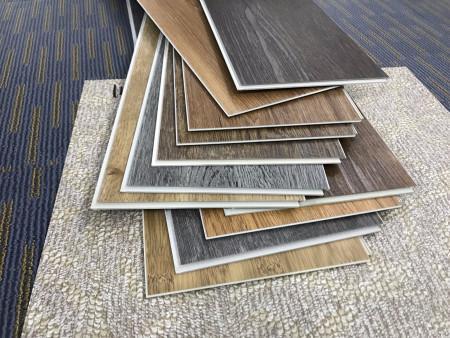

 Industry News
Industry News
Location:Homepage > Media Center > Industry News > Understanding Resilient Flooring: An Introduction
Understanding Resilient Flooring: An Introduction

If you're a Designer or Architect, you've likely encountered the term "resilient flooring." Whether you're embarking on your first healthcare design project or transitioning from residential to commercial design, understanding resilient flooring is crucial. Mannington Commercial, established over a century ago by John Boston Campbell in Salem, NJ, has been a pioneer in resilient flooring, particularly with its innovative product "Vinyl-Tex," introduced in the late 1950s. Today, Mannington remains a leader in healthcare flooring due to its resilient sheet products.
Resilient flooring encompasses various types, each offering distinct characteristics and benefits:
Vinyl Products: This category includes luxury vinyl tile (LVT) and sheet vinyl. Vinyl flooring is known for its durability, versatility, and wide range of designs, making it suitable for various commercial applications.
Vinyl-Composition Products: Vinyl composition tile (VCT) is a popular choice for high-traffic areas due to its resilience and ease of maintenance. It is often used in commercial settings such as hospitals, schools, and retail spaces.
Rubber Flooring: Rubber flooring is valued for its durability, slip resistance, and sound-absorbing properties. It is commonly used in healthcare facilities, gyms, and other high-traffic areas.
Cork Flooring: Cork flooring is a sustainable option known for its natural warmth, comfort underfoot, and sound insulation properties. It is often used in commercial spaces seeking a unique, eco-friendly flooring solution.
Linoleum Flooring: Linoleum is made from natural materials such as linseed oil, wood flour, and cork dust, making it a sustainable and resilient flooring option. It is available in a wide range of colors and patterns, suitable for various commercial environments.
According to the Resilient Floor Covering Institute (RFCI), resilient flooring is defined as "a non-textile floor that provides underfoot comfort and characteristically bounces back from repeated traffic or compression." Essentially, it refers to any flooring where the wear surface is non-textile, non-wood, and non-stone.

Resilient flooring products come in multiple forms, primarily sheet, tile, and plank:
Sheet flooring is typically packaged in rolls and offers flexibility, making it suitable for large areas with minimal seams. It is available in various lengths and widths, allowing for customizable installations to meet specific design requirements.
Tile and plank flooring are often packed in cartons and offer a diverse range of design options, including wood and stone visuals. While less flexible than sheet flooring, tiles and planks provide easy installation and maintenance, making them ideal for commercial spaces with high aesthetic and performance demands.
Resilient flooring can be classified as homogeneous or heterogeneous:

Homogeneous flooring consists of a single layer throughout, providing uniformity in appearance and performance. Examples include traditional sheet vinyl and rubber flooring, known for their durability and resilience.
Heterogeneous flooring comprises multiple layers with distinct chemistries, offering enhanced design flexibility and performance characteristics. Examples include luxury vinyl tile (LVT) and multilayered flooring, which combine different materials to achieve specific aesthetic and functional requirements.
Layers in resilient flooring serve specific functions:
Wear Layer: Located on the surface of the flooring, the wear layer protects against scratches, stains, and wear from foot traffic. It also contributes to the flooring's overall durability and longevity.
Printed Layer: Beneath the wear layer, the printed layer provides the flooring's visual appearance, including patterns, textures, and colors. Advanced printing technologies ensure realistic and high-definition visuals that mimic natural materials like wood and stone.
Inner Layers: These layers provide structural support and dimensional stability to the flooring, ensuring it maintains its shape and integrity over time. Depending on the flooring type, inner layers may include backing materials, core layers, and reinforcement elements.
Backing Layers: Located on the underside of the flooring, backing layers provide additional support and stability. They also facilitate installation and bonding to the subfloor, ensuring a secure and long-lasting flooring system.
In summary, resilient flooring offers a versatile, durable, and aesthetically pleasing solution for various commercial and healthcare settings. Understanding its types, forms, and construction layers is essential for specifying the right flooring for any project, ensuring optimal performance, longevity, and design integrity.